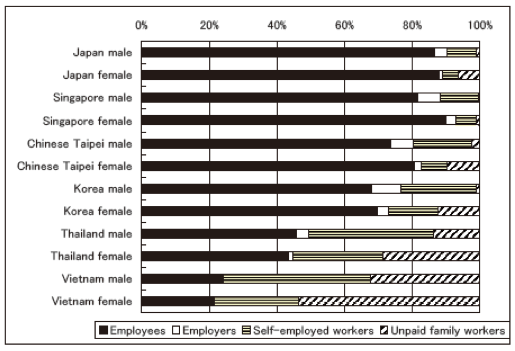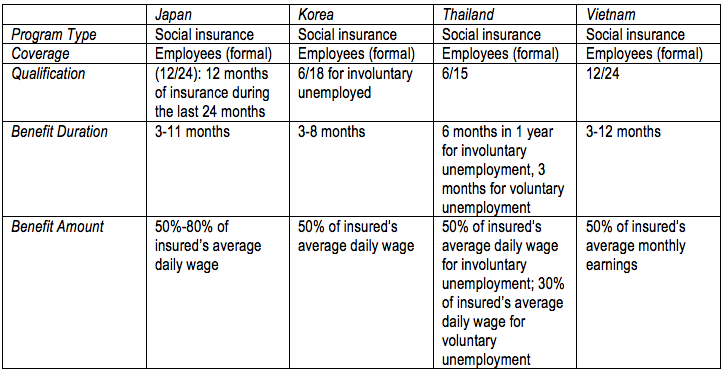This post is a continunation of our series of posts on Unemployment Support in India. The below post borrows heavily from Kamimura’s “Employment structure and Unemployment insurance in East Asia: Establishing social protection for inclusive and sustainable growth” and Schmitt’s “Promoting unemployment benefits and income security measures for workers in Asia: Current debate, situation and way forward”. All tables and charts based on data from Kamimura’s paper.
Before delving into the unemployment support mechanisms, it is useful to take a look at the labour market structures in East Asian countries.

It is clear that in industrialized countries like Japan and Singapore, close to 80%-90% of the workforce are formal sector employees and a small proportion of elf-employed workers. But this image is turned on its head in Thailand and Vietnam, where the formal workforce is 40% or less, and self-employed and unpaid family workers predominate. There is a much higher level of informality in Thailand and Vietnam, which would indicate the need for different types of strategies to combat unemployment.
However, if one were to expect that the more industrialized economies were more likely to have unemployment insurance, this is not the case. Hong Kong and Singapore do not have unemployment insurance, while Vietnam and Thailand do.
The following table uses data from the International Social Security Association’s “Social Security Country Profiles” (www.issa.int/aiss/observatory) and lays out the design of unemployment insurance programs from Japan, Korea, Thailand and Vietnam. While qualifying conditions vary, it is clear that the unemployment insurance programs cover only formal sector workers. Apart from Korea, where government does not contribute, all the other countries have contribution from employers, employees and government. The amount and duration of benefits vary, but at a minimum it appears that 50% of the insured employee’s wage is paid as benefit for a period upward of 3 months.

Kamimura also analyses the effectiveness of coverage under these social insurance schemes finds that Japan has highest coverage of workforce by social insurance (56%) , while Vietnam has the least (11.8%), which is as we would expect on account on the higher informality of Vietnam’s workforce. What it also indicates is that in response to unemployment, countries like Thailand and Vietnam have to develop creative mechanisms to incorporate larger segments of the informal or unorganized sector into social insurance programs and also design other strategies like work programs to reach out to this sector.


